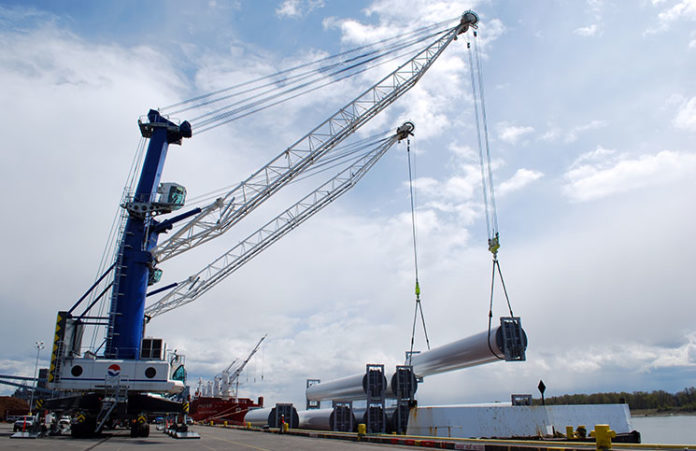
President Trump’s decision to impose a 25 percent duty on foreign steel is causing headaches and uncertainty for the Port of Vancouver and its manufacturing business clients.
The duty, which goes into effect on March 23, is aimed at preventing illegal steel dumping and fighting trade deficits, the administration has said. The president temporarily exempted Mexico and Canada from the decision while those countries renegotiate the North American Free Trade Agreement, and has suggested he’s willing to consider exceptions from other countries. But since much of the Port of Vancouver’s steel is imported from Asian countries, the decision is not likely to prevent major impacts in the short term.
“There’s a lot of uncertainty,” said Heinz Lange, sales director at the port. “A lot of customers are looking for stability, and this puts things in limbo.”
Steel that comes through the Port of Vancouver supports a host of local industries, with about 36 percent of port revenues tied to the material. Imported steel is used by screen door makers, coat hanger makers, pipe manufacturers, wind energy companies, washing machine makers and a whole host of other manufacturers and businesses.
The port gets most of its Asian steel from South Korea, Taiwan, Japan and Vietnam, with a little from Russia. It gets very little from China, which has already been hit by efforts to curb illegal steel dumping in the United States, Lange said.
“The emphasis is more on punishing China,” Lange said. “There have been measures with anti-dumping duties already, which has curbed some of the imports.”
After those measures were put in place, however, China looked like it was still trying to manipulate the steel market once again by moving product through Vietnam, which means some of the other Asian countries may be acting badly.
“A lot of product went through Vietnam, and made it so the country of origin looked like Vietnam,” Lange said. “That’s why these tariffs are across the board.”
South Korea hasn’t been charged with anything like that, and it has ample steel mills itself. But South Korea and the United States are about to negotiate a new trade deal, and the tariffs could remain in place if the deal goes poorly, Lange said.
In the meantime, as the deadline approaches, the Port of Vancouver is doing what it can to try to lessen the blow to local industry.
“In preparation for this dumping duty, people are asking if they can import their steel early,” Lange said.
The 25 percent tariffs go into effect 15 days after the measure was signed on March 8. And because it takes 40 days to transport steel from Asia to Houston, one of the biggest U.S. importers of steel, the measure and timing are causing some international shipping problems.
The Port of Vancouver, which takes 14 days to reach from Asia, can divert and take in some of the steel earmarked for Houston before the increased duties take effect, and it can also take in larger orders from Asia over the next few weeks until the deadline arrives.
“Some vessels are asking to come in early before those 15 days pass,” Lange said.
The port has enough storage to take in somewhere between 200,000 and 300,000 metric tons of steel before the deadline. That’s a bit less than half of its yearly imports of about 700,000 metric tons. The Port of Vancouver is the second largest steel importer on the West Coast.
But even with a cushion of extra steel coming in before the deadline, Alex Strogen, the port’s chief commercial officer, said he thinks it will take several months or longer for industry to digest the extra 25 percent cost of foreign steel.
“I think there’s a potential for a short-term spike in volume before the tariff takes effect,” Strogen said. “Then the wall comes, as the market tries to digest that extra 25 percent cost. I think it will take some time for market forces to adjust to that, and I think we’ll also see a lull of those imports coming into the port for a while.”
Another possible problem with the new duties is if China and other countries decide to get into a trade war over other products it trades with the United States. Typically, steel importers will drop off their steel, then reload with U.S. grain or other food products for the return.
“If China retaliates over grain, that would hurt us,” Lange said.
Still, the port is diversified enough that it will weather the storm, even if the tariffs are likely to cause some interim chaos, said Abbi Russell, the port’s spokeswoman.
“There will be some kind of impact, but we’ve also spent many years diversifying the cargo at the port,” Russell said. “That helps us keep things stable, and helps us support jobs and industry.”
Courtesy of Port of Vancouver. Steel that comes through the Port of Vancouver supports a host of local industries, including wind energy companies.









